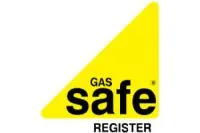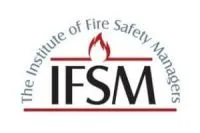Lighting the Way in Safety and Compliance
Ensure your emergency lighting meets the highest standards with the London Safety Certificate. Serving West London, we provide expert testing and maintenance around the clock. Contact us today to safeguard your premises efficiently and reliably.
ONLY £69.99
* All inclusive (No hidden Cost)
* Limited time offer upto 2 weeks from now

The Importance of Regular Emergency Lighting Testing in West London
In West London, you must regularly test your emergency lighting systems to meet strict safety standards. These tests, including monthly short-function checks and annual full-duration tests, ensure that your lights function properly during an outage, guiding everyone to safety efficiently. Inspect batteries, wiring, and bulbs for optimal performance and compliance. Technicians should conduct these evaluations meticulously to maintain system reliability and prevent malfunctions. Rigorous testing assures compliance with local regulations and secures your property and occupants. Further exploration will uncover deeper insights into maintaining continuous compliance and safety measures.
London Safety Certificate specialises in Emergency Lighting Testing, serving clients across West London with over a decade of expertise. Dedicated to ensuring the safety and compliance of emergency lighting systems, our service is distinguished by the professionalism of our trained technicians, who perform thorough inspections and maintenance around the clock. We pride ourselves on transparent pricing and our commitment to reliability, efficiency, and compliance. This has earned us a stellar reputation and a track of 5-star reviews from diverse sectors. Whether you’re looking to ensure the safety of your premises or meet regulatory requirements, our team is equipped to provide top-tier emergency lighting testing services.
1-3 Lights Certificate
£69.99
✔ Emergency Lighting Certificate
✔ Any additional light will be at £20 each
✔ Professional Accessors
✔ 10 Years Experience

HOW CAN WE HELP
At London Safety Certificate, we specialise in providing top-tier Emergency Lighting Testing services across West London, ensuring that our clients meet all legal compliance requirements with utmost reliability and efficiency. Our expert team is dedicated to conducting thorough inspections and tests to guarantee that emergency lighting systems are functioning optimally and safely, enhancing your premises’ safety during emergencies. By choosing our services, customers adhere to safety regulations and foster a secure environment for occupants, ultimately reflecting our core values of reliability, efficiency, and compliance.

WHY US
Choosing the London Safety Certificate for your emergency lighting testing needs in West London ensures that you are partnering with a highly experienced and reputable provider dedicated to ensuring the safety and compliance of your premises. With over 12 years of specialised experience, our team of trained, professional technicians offers reliable, efficient, and compliant services designed to meet the highest standards. We pride ourselves on transparent pricing and are committed to providing round-the-clock testing and maintenance without hidden charges. Our extensive track record of satisfaction across various sectors, underscored by consistent 5-star reviews, confirms that the London Safety Certificate is the premier choice for businesses seeking peace of mind and excellence in emergency lighting solutions.
What is Emergency & Exit Lighting?
While emergency lights are designed to illuminate paths during power failures, exit lighting specifically marks the escape routes to guide occupants safely out of the building.
You need to understand that both types of lighting are crucial for safety and are mandated under various building codes and safety regulations.
Let’s delve deeper into the specifics of emergency and exit lighting.
Emergency lighting and exit signs are vital in ensuring safe evacuation during emergencies. These systems are powered by operational sources even when the main power supply fails.
The installation procedures for these systems are precise and must comply with strict building codes to optimise functionality and safety.

Testing Frequency
Ensuring systems work correctly through scheduled tests and immediate repairs if issues are detected.
Book Now
Risk Assessments
Conducted to tailor the emergency lighting systems to the specific needs and layout of a building.
Book NowAdhere to these guidelines as part of your building management or ownership role.
Regular maintenance and adherence to installation procedures ensure compliance with legal requirements and foster a sense of security among building occupants.
Testing Requirements for Emergency Lighting
Why should you test your emergency lighting systems regularly? Ensuring the functionality and reliability of your emergency lighting isn’t just a matter of compliance; it’s a crucial component of building safety that protects both life and property during emergencies.
Regular testing aligns with safety standards and maintenance protocols essential for operational readiness. The testing frequency should be tailored to meet your systems’ latest regulatory updates and specific installation guidelines. Monthly short-function and annual full-rated duration tests are recommended to ensure each unit functions correctly and the battery lifespan is within acceptable limits.
These tests verify that the lights will operate for a designated period, often three hours, in case of a power failure. Maintenance protocols must be rigorously followed. This includes periodic inspection procedures to check for any physical or functional issues.
The advent of technological advancements in emergency lighting systems—such as LED technologies that offer longer lifespans and enhanced performance metrics—requires ongoing user training to keep your team updated on how to handle new systems effectively.
Moreover, staying abreast of regulatory updates ensures that your emergency lighting system complies with the latest safety standards, safeguarding your occupants and assets. Regular updates to your team’s training and an in-depth understanding of the system’s performance metrics further enhance the safety and effectiveness of your emergency response capabilities.
What is the Standard for Emergency Lighting Tests?
Use specific testing protocols to determine if your emergency lighting system meets safety standards. Understanding these standards is crucial for ensuring the safety of occupants and complying with legal requirements.
As you navigate through the complexities of emergency lighting testing in West London, remember that the essence of these tests is to verify the functionality and reliability of your emergency lighting under different conditions.
Comprehensive knowledge of the following key aspects will empower you to maintain and certify your system effectively:
- Emergency power: Ensure backup power sources kick in immediately and sustainably when the main power fails.
- Lighting Maintenance: Regular maintenance schedules are mandated to prevent malfunctions during emergencies.
- Battery testing: Periodic checks on battery health and performance are critical, especially to test how long the lights can operate on these batteries during a power outage.
- LED advantages: Utilize LED technology for better efficiency and longer lifespan, enhancing the reliability of emergency lighting.
- Illumination levels: To facilitate safe evacuation, critical areas must be lit to specified standards.
Incorporating these elements into your regular inspection regimen aligns with safety regulations and installation guidelines set by authoritative bodies.
Adherence to signage requirements, setting appropriate illumination levels, and maintaining a stringent inspection frequency are all parts of ensuring that your emergency lighting systems meet compliance standards.
Book nowTypes of Emergency Lights
Understanding the different types of emergency lights is crucial for choosing the right setup for your building’s safety requirements. As you navigate the options, consider factors such as LED technology, battery longevity, and regulatory compliance.
Firstly, LED emergency lights are prominent due to their efficiency and long service life. They use less power and offer improved visibility, vital in emergencies. When selecting LEDs, you should consider fixture placement and design considerations to ensure optimal illumination during power outages.
Battery-powered emergency lights are another type. Their longevity and maintenance schedules are critical factors you’ll need to assess. These units rely on batteries as their primary power source, requiring regular checks and replacements to maintain functionality. It’s also worth examining the performance metrics of these batteries to ensure they meet your needs.
Hard-wired emergency lights draw power from your building’s electrical system but switch to battery backup during an outage. Installation guidelines for these systems are stringent to ensure they perform reliably in emergencies. Cost analysis is also essential here, as initial installation and ongoing maintenance must be balanced with the overall budget.
Incorporate these systems following local regulatory compliance standards. Each type of emergency light has specific codes that dictate everything from brightness to placement within your facility.
Lastly, remember that each emergency lighting system should be tailored to your specific building requirements, considering all aspects of power sources, maintenance, and cost efficiency to ensure safety and compliance.
Documentation and Compliance
After completing your emergency lighting systems’ physical and functional testing, you must carefully document all findings and ensure compliance with relevant safety standards. This critical step not only fulfils legal obligations but also strengthens the safety network within your organisation, fostering a sense of security and belonging among all stakeholders.
Your documentation process should align with established testing protocols and regulatory frameworks. You can start by updating your maintenance logs with detailed results from the latest tests. These logs serve as a vital reference for safety audits, helping you demonstrate proactive compliance and operational integrity.
Also, please keep up-to-date inspection schedules to ensure no component of your emergency lighting system goes unchecked over time.
Next, focus on compliance certifications. These documents prove adherence to national safety standards and are essential during regulatory inspections. They must be accessible and updated following each testing cycle.
Could you incorporate risk assessments into your documentation? These assessments should detail potential risks identified during testing and outline measures taken to mitigate them. This proactive approach minimises hazards and demonstrates a commitment to continuous improvement.
Pay attention to training requirements. Ensure that all relevant personnel are trained on the latest safety protocols and understand their roles in maintaining system efficacy.
Equally important is equipment labelling, which must be clear and compliant, guiding quick emergency responses.
Book NowCommon Issues and Troubleshooting
Maintaining and adhering to emergency and exit lighting systems guidelines, you may encounter several common issues that can compromise their effectiveness. Identifying and addressing these problems promptly ensures your system remains compliant and functional during emergencies.

Battery
Failures
Dim lights, no activation
Check battery connections and replace them if necessary

Circuit
Issues
Lights not functioning, intermittent issues
Inspect wiring to ensure circuits are not overloaded

Bulb
Replacements
Flickering lights, uneven illumination
Replace bulbs, consider upgrading to LEDs for longevity

Wiring
Problems
Inconsistent light performance, potential safety hazards
Secure all connections, replace damaged wires
Regular testing and adherence to maintenance schedules are crucial for each issue. It’s not just about fixing what’s broken; it’s about preventing failures through diligent oversight and understanding how environmental factors may impact your system. Compliance audits are key in ensuring every component meets legal and safety standards.
Commercial Emergency Light Testing
Building on the foundation of rigorous documentation and compliance, you must also prioritise the specific practices of commercial emergency light testing.
Understanding the nuances of this process is crucial to ensuring your facilities meet the highest standards for safety and efficiency. It’s not just about meeting legal requirements; it’s about safeguarding your community.
Commercial emergency light testing involves several key steps to ensure your lighting systems function optimally when needed. It’s not just a routine check; it’s a vital part of your emergency preparedness strategy.
Here’s what you need to focus on:
Risk Assessment
Evaluate your premises to identify potential hazards and ensure that emergency lighting is accessible and adequate.
Installation Guidelines
Follow the latest standards to ensure all lighting technology is correctly installed and positioned.
Inspection Frequency
Regular checks are crucial. The frequency of these inspections should align with safety regulations and your operation’s specific demands.
How Does Emergency Light Testing Work?
Regular testing is essential to ensure the reliability and compliance of your emergency lighting system. You’re not just checking a box on a safety checklist but safeguarding a community.
Here’s how to thoroughly test your system to ensure optimal performance and adherence to legal standards.
Testing involves several key steps designed to assess and enhance different aspects of emergency light functionality. You’ll start with a visual inspection to identify any signs of wear or damage. This is more than a cursory glance; you’re looking for anything that might compromise the system’s integrity.
Next, you engage in battery performance evaluation. This step checks if the backup batteries hold charge and can power the lights for the required duration during an outage. Remember, the reliability of your emergency lighting often hinges on battery health.
Another critical measure is circuit integrity checks. This involves testing the wiring and connections within the emergency lighting circuits to ensure they’re intact and functioning correctly. Faulty wiring can lead to system failures when you least expect them.
You must also review the lighting duration standards to confirm that all lights meet the required operational timeframe during testing. This isn’t just about compliance; it’s about real-world efficacy.
Here are the key points to keep in mind:
- Visual inspection techniques
- Battery performance evaluation
- Circuit integrity checks
- Compliance checklist reviews
- Equipment calibration importance
Each of these steps ensures that your emergency lighting system is installed and fully prepared to function in an emergency.
Choosing the Right Equipment
Selecting the right emergency lighting equipment is crucial for your facility’s safety and compliance with regulations. As you navigate the myriad options, you should prioritise LED technology for its energy efficiency and longer battery lifespan. This choice ensures sustainable operation and aligns with modern environmental standards.
When considering installation, adhere strictly to the latest installation guidelines. This adherence isn’t just about ensuring operational efficacy; it’s about integrating your system into your facility without compromising safety or aesthetics.
Design considerations should include the layout of your premises and the specific needs of different areas. For instance, high-risk zones may require more robust lighting solutions than general areas.
Further, conducting a thorough photometric analysis helps you understand how light is distributed across your facility. This analysis ensures that all critical areas are well-lit in an emergency, facilitating safe evacuation. Remember, the goal here isn’t just to install lights but to strategically place them where they’ll be most effective.
Another critical aspect is maintenance frequency. Regular checks and updates can significantly extend your system’s life and functionality.
Keep abreast of regulatory updates to ensure your equipment remains compliant. Additionally, consider the product warranties offered, which can provide peace of mind and potentially lower long-term costs.
Book nowDiscover How Our Emergency Lighting Testing Services Enhance Safety and Compliance in West London
Emergency lighting is critical to any building’s safety system, ensuring illumination during a power outage or other emergency situations to facilitate safe evacuation. At London Safety Certificate, we specialise in comprehensive emergency lighting testing, integrated safety audits, and predictive analytics to optimise system performance. Our services are specifically tailored to meet the complex safety requirements of buildings in West London, ensuring that all emergency lighting systems function flawlessly when needed most.
Our approach to emergency lighting testing goes beyond conventional methods. By incorporating predictive analytics, we can anticipate potential system failures before they occur, allowing for timely interventions that save costs and enhance safety. This proactive strategy is part of our broader Integrated Safety Audits, which review multiple safety systems within a building to ensure they all function cohesively. This not only streamlines compliance with various safety regulations but also improves the overall safety standards of the property.
Moreover, our Adaptive Testing Solutions are designed to be flexible, adjusting to each individual property’s specific needs and complexities. This targeted assessment strategy increases the accuracy and relevance of our testing, ensuring that every aspect of your emergency lighting system is thoroughly inspected and optimised for peak performance. Whether you manage a small office or a large commercial complex in West London, our tailored solutions provide the comprehensive coverage and peace of mind you need to ensure your property is safe and compliant.
FAQs
Due to legal implications, Emergency Lighting Certificates are usually not transferable between property owners. Temporary installations might require new certification. Renewal deadlines every year are essential, and historic buildings may have unique requirements.
Not having an emergency lighting certificate in London, where required, can lead to legal implications, fines, safety hazards during evacuations, insurance coverage issues, liability concerns, non-compliance with regulations, failed inspections, reputation damage, and a loss of trustworthiness.
During temporary events, ensuring compliance with regulations is key. Portable systems at outdoor venues must meet safety standards. Emergency exits and inspection requirements are essential for safe evacuations during emergency drills.
When ensuring emergency lighting systems in heritage or listed buildings in London, adhere to conservation guidelines, historical considerations, architectural restrictions, preservation concerns, and design limitations. Stay compliant while respecting the unique characteristics of these structures.


















